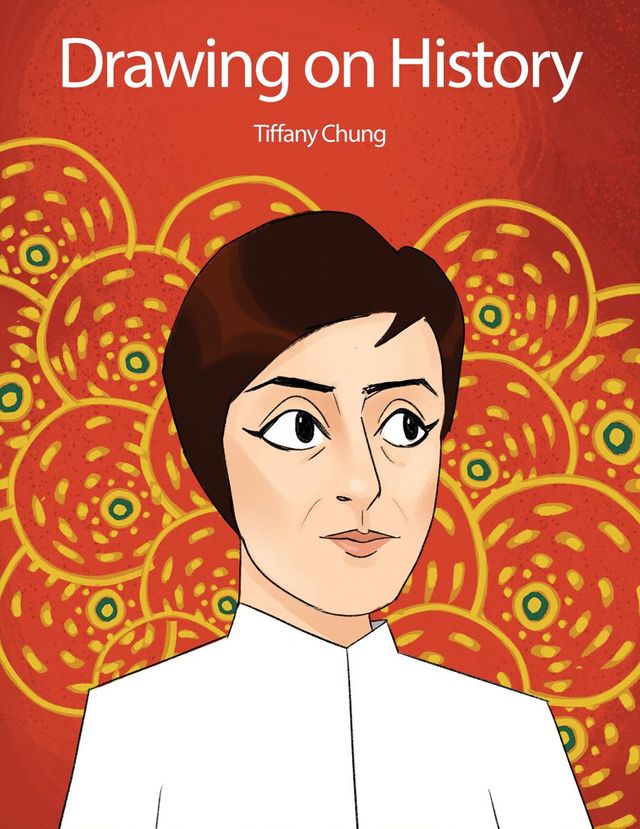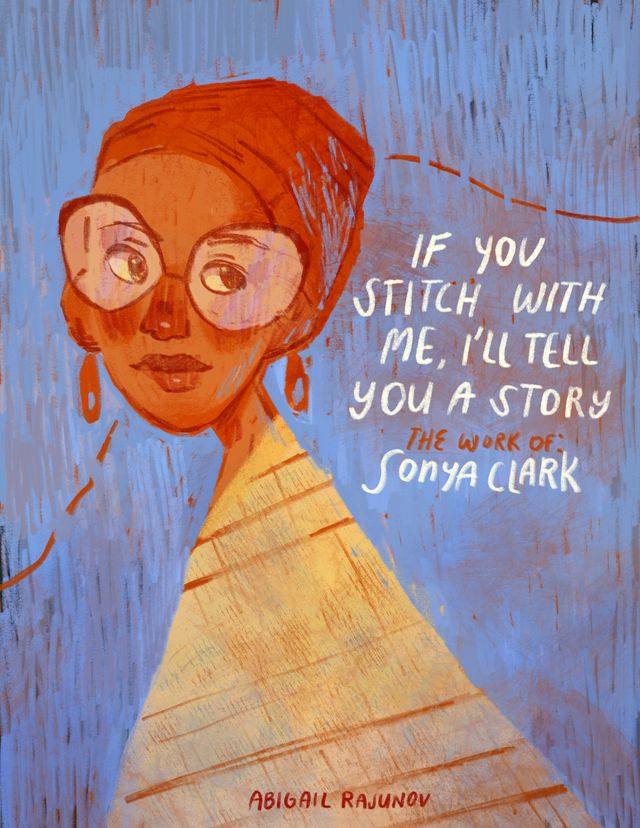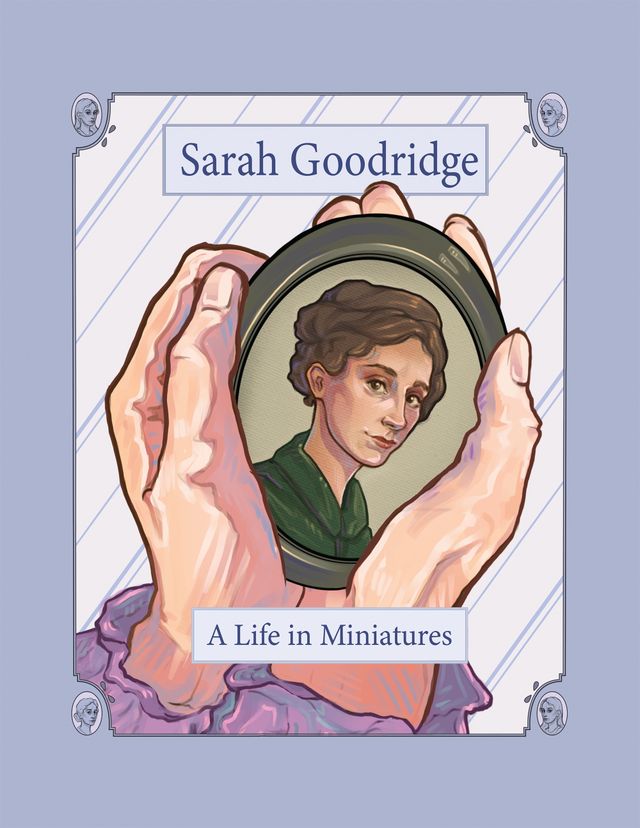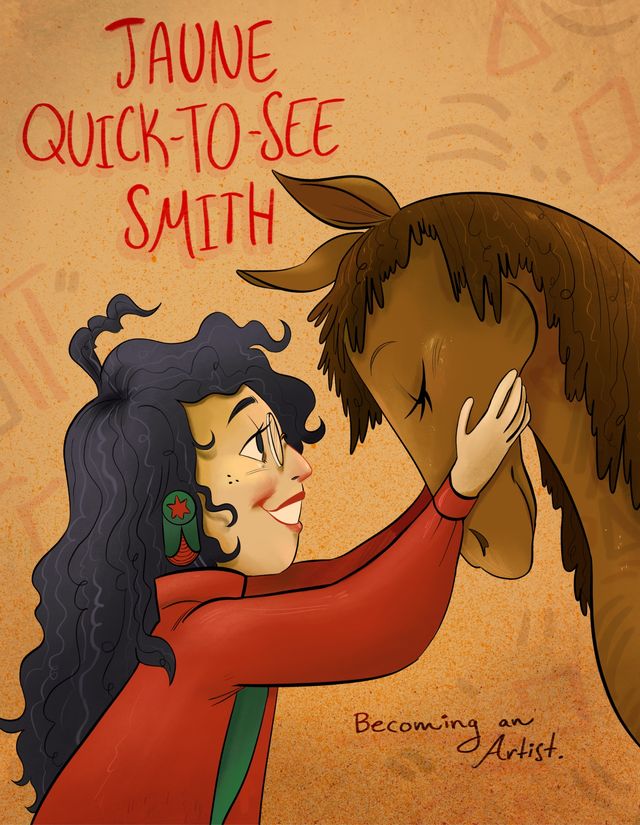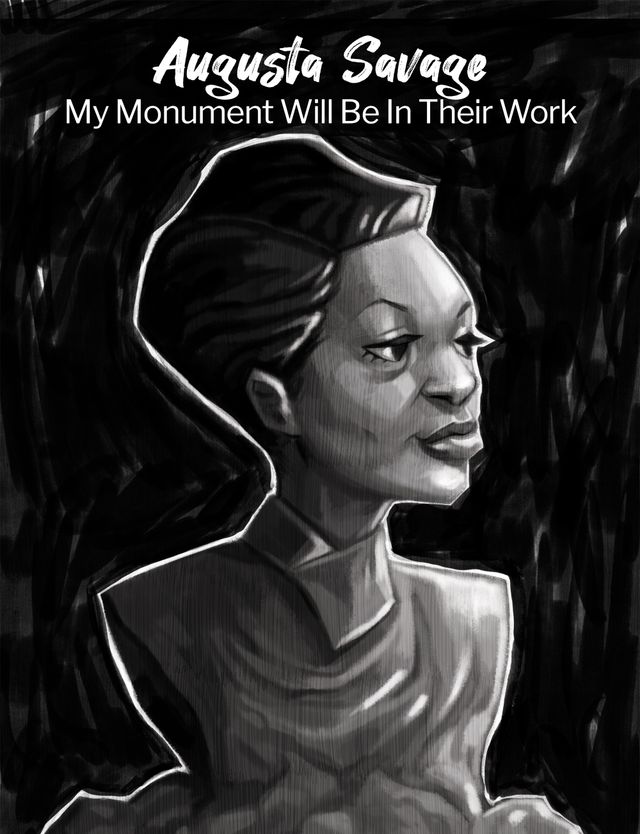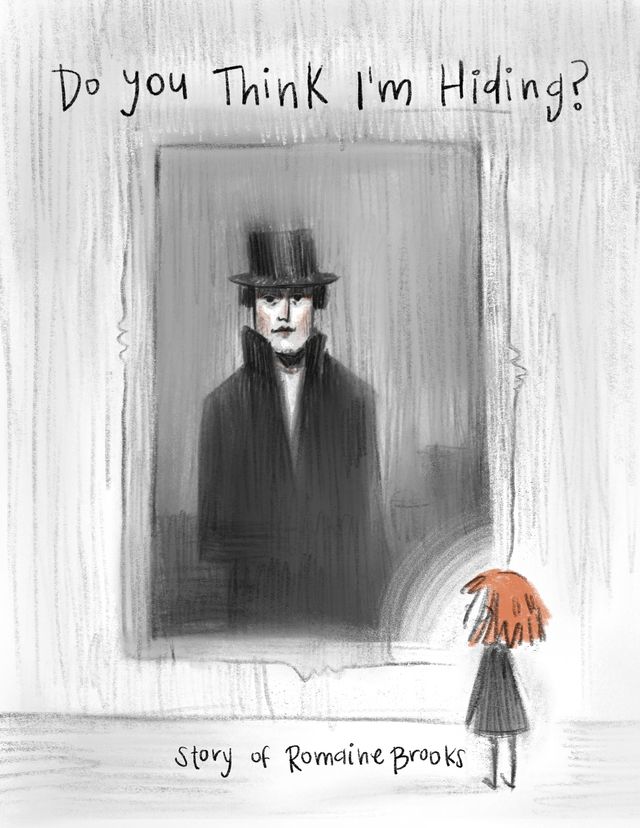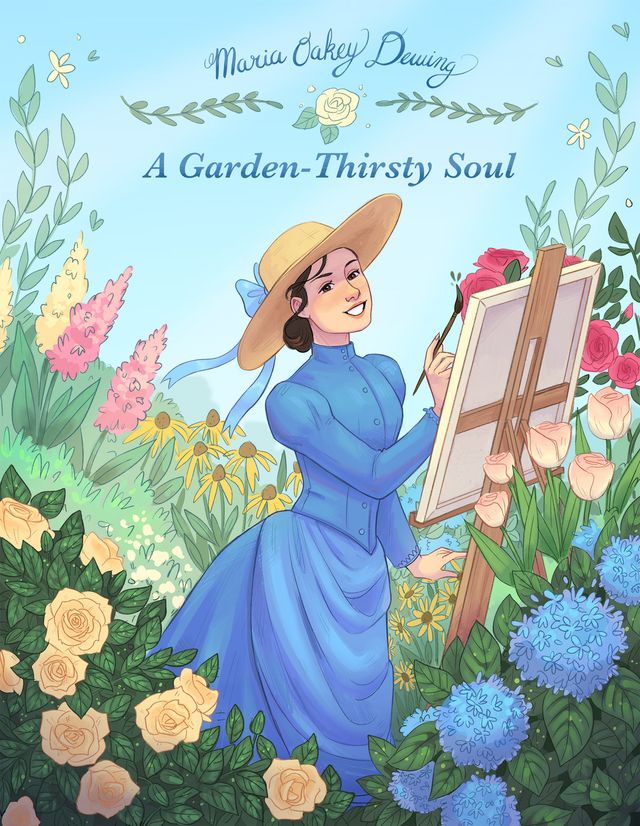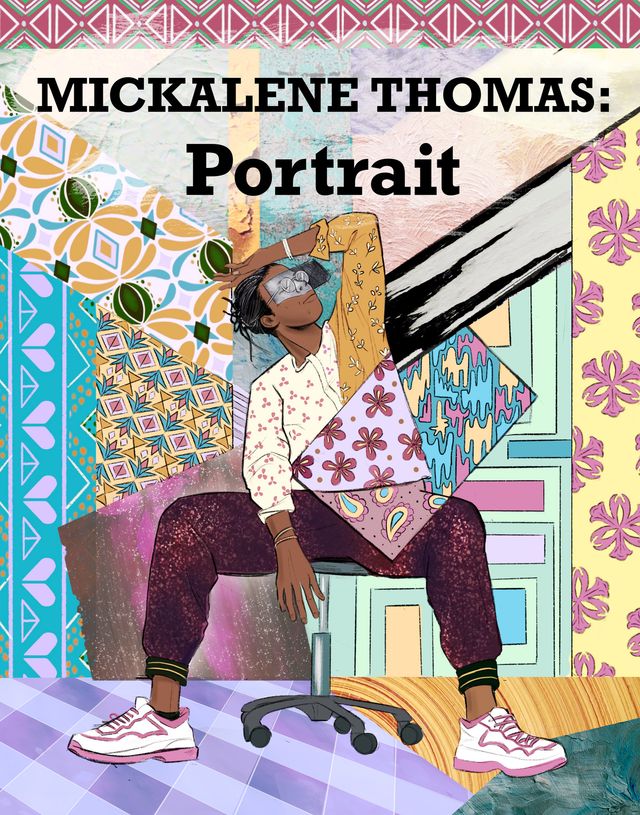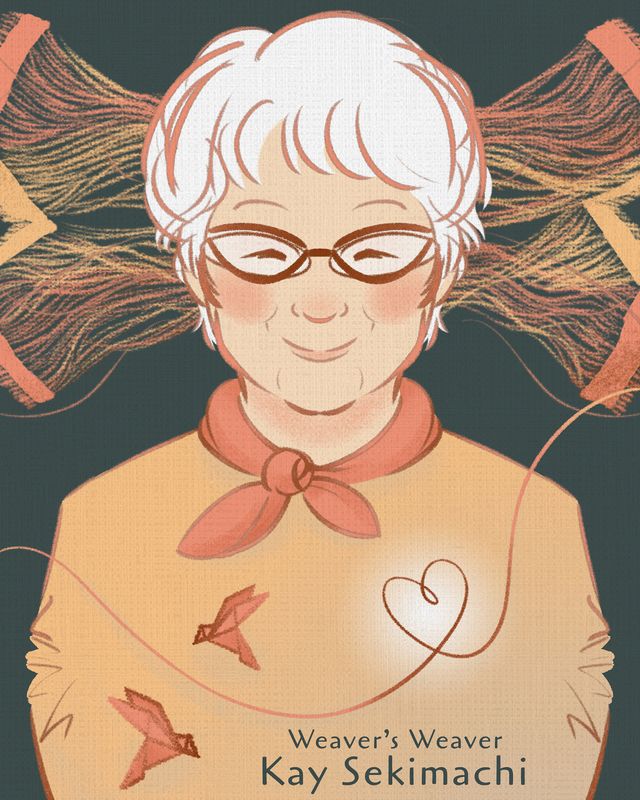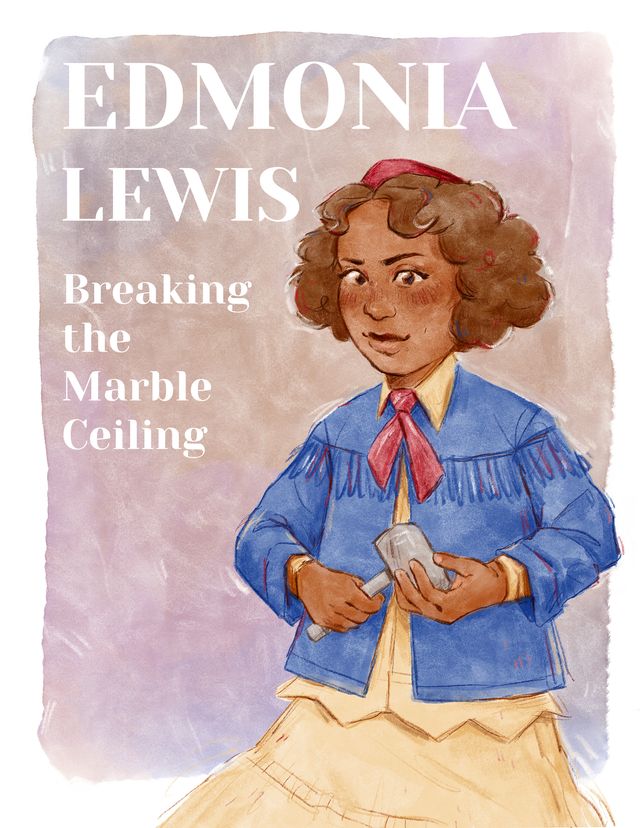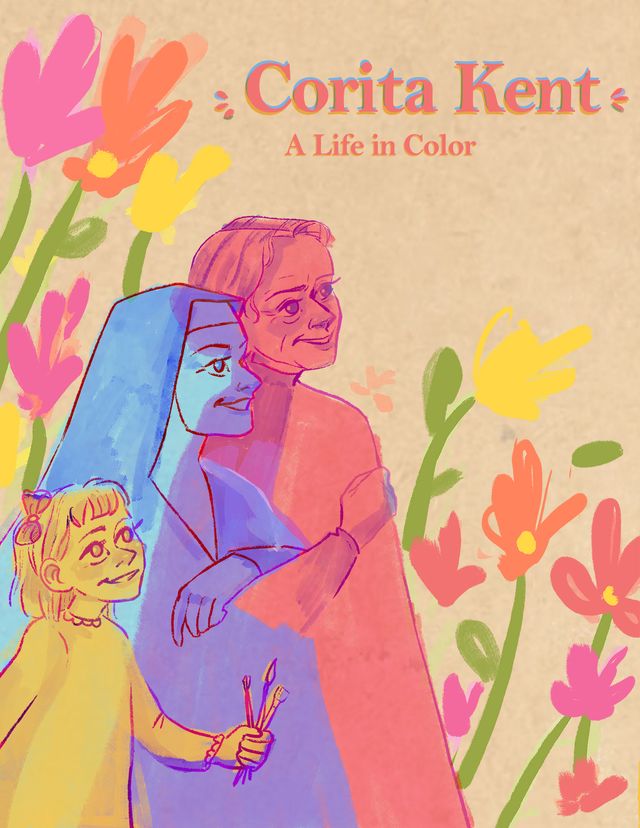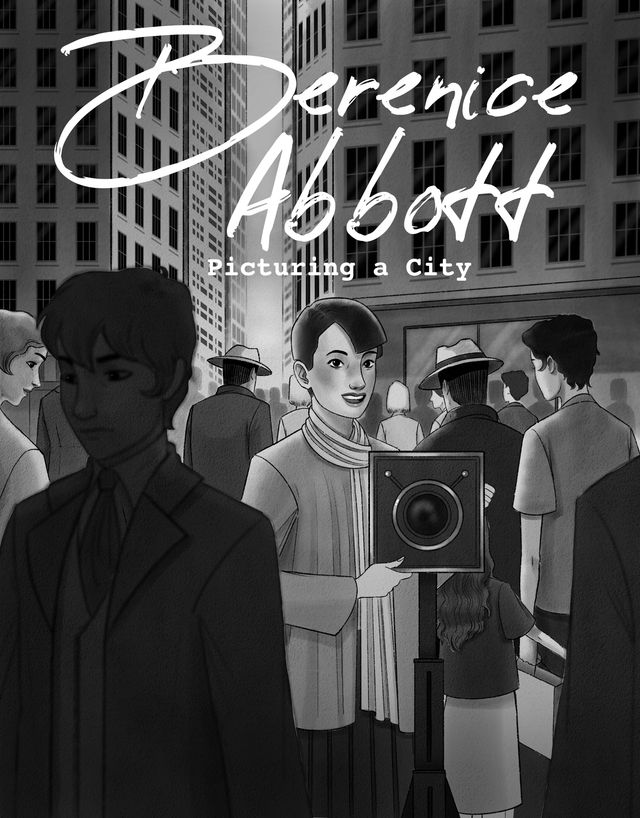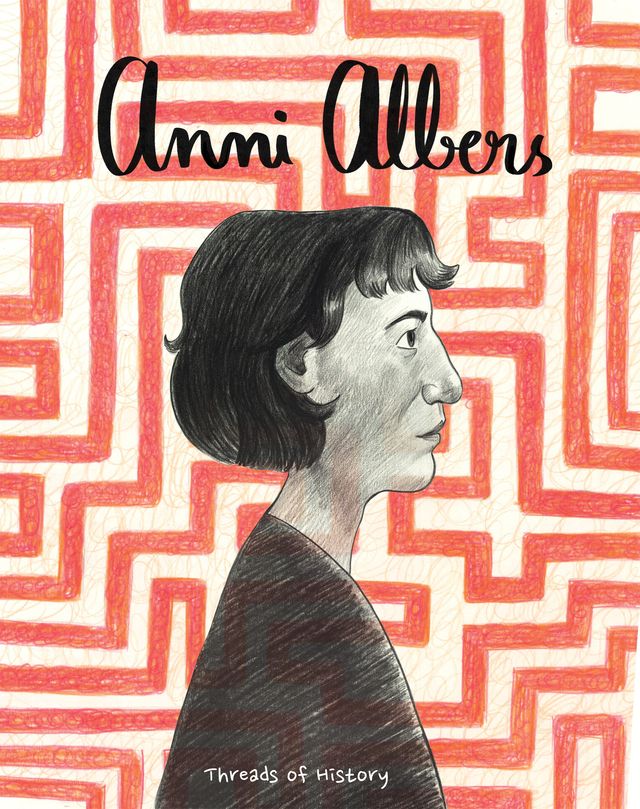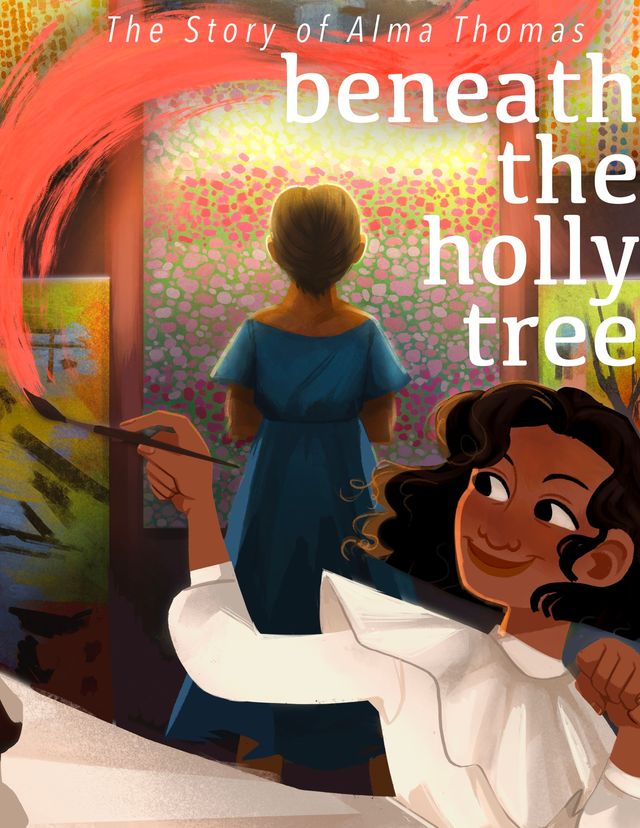An Overview
Despite facing discrimination, Loïs Mailou Jones had a successful career as an artists and as a professor at Howard University. She traveled around the world to Paris, Haiti, and Africa for inspiration. Jones has become an important role model for African American artists.
This comic is part of a series Drawn to Art: Tales of Inspiring Women Artists that illuminates the stories of women artists in the collection of the Smithsonian American Art Museum. Inspired by graphic novels, these short takes on artists’ lives were each drawn by a student-illustrator from the Ringling College of Art and Design.
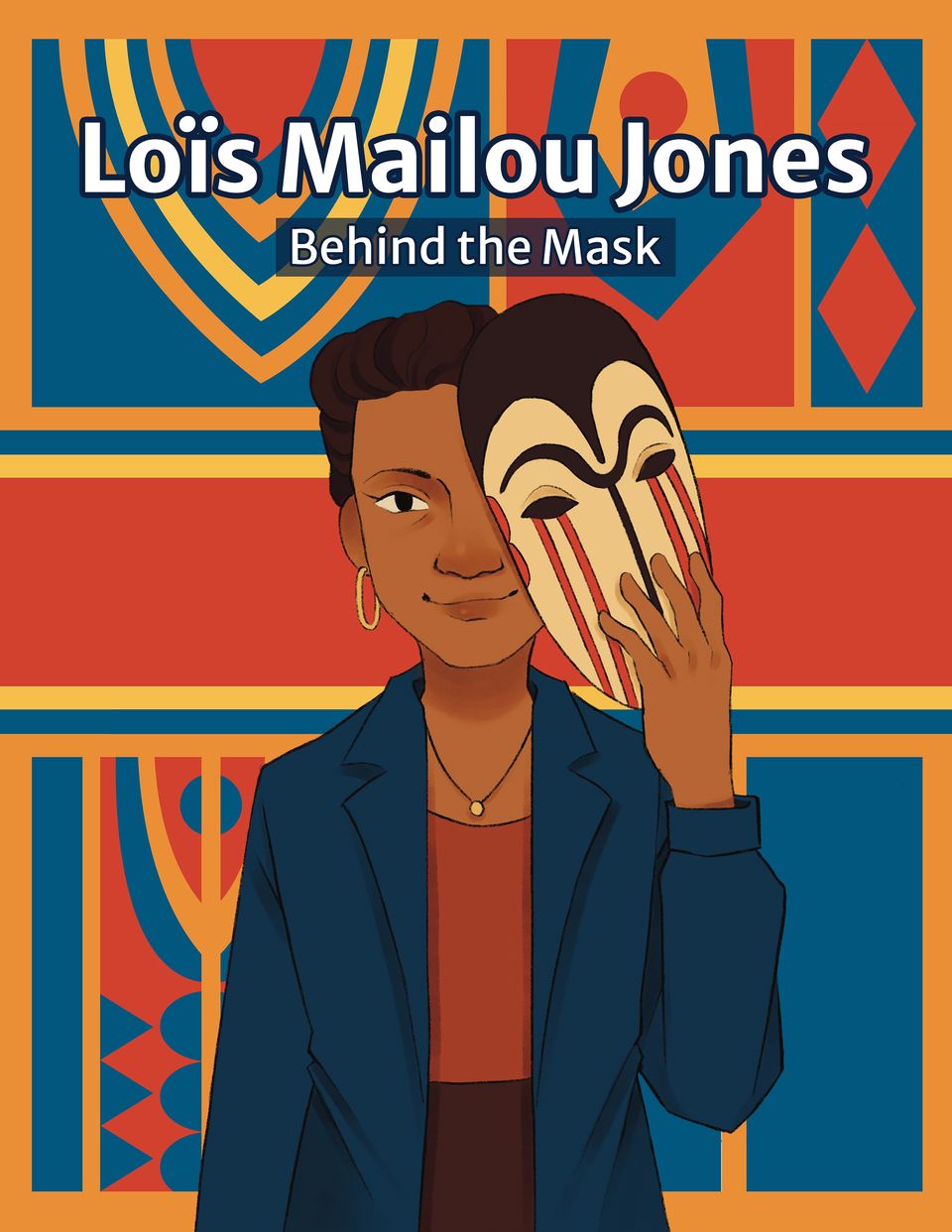
A Black woman, Loïs Mailou Jones, holds an African mask in front of her face, her mouth and eyes smile softly. She has medium brown skin, dark brown hair, and deep brown eyes. Her hair is pushed back from her face and she is wearing gold hoop earrings, a delicate gold necklace with a circle charm, a navy blue blazer, light brown shirt, and brown pants. The artist stands in front of a geometric patterned background in orange, blue, yellow, and gold. Text above her reads: “Lois Mailou Jones Behind the Mask”
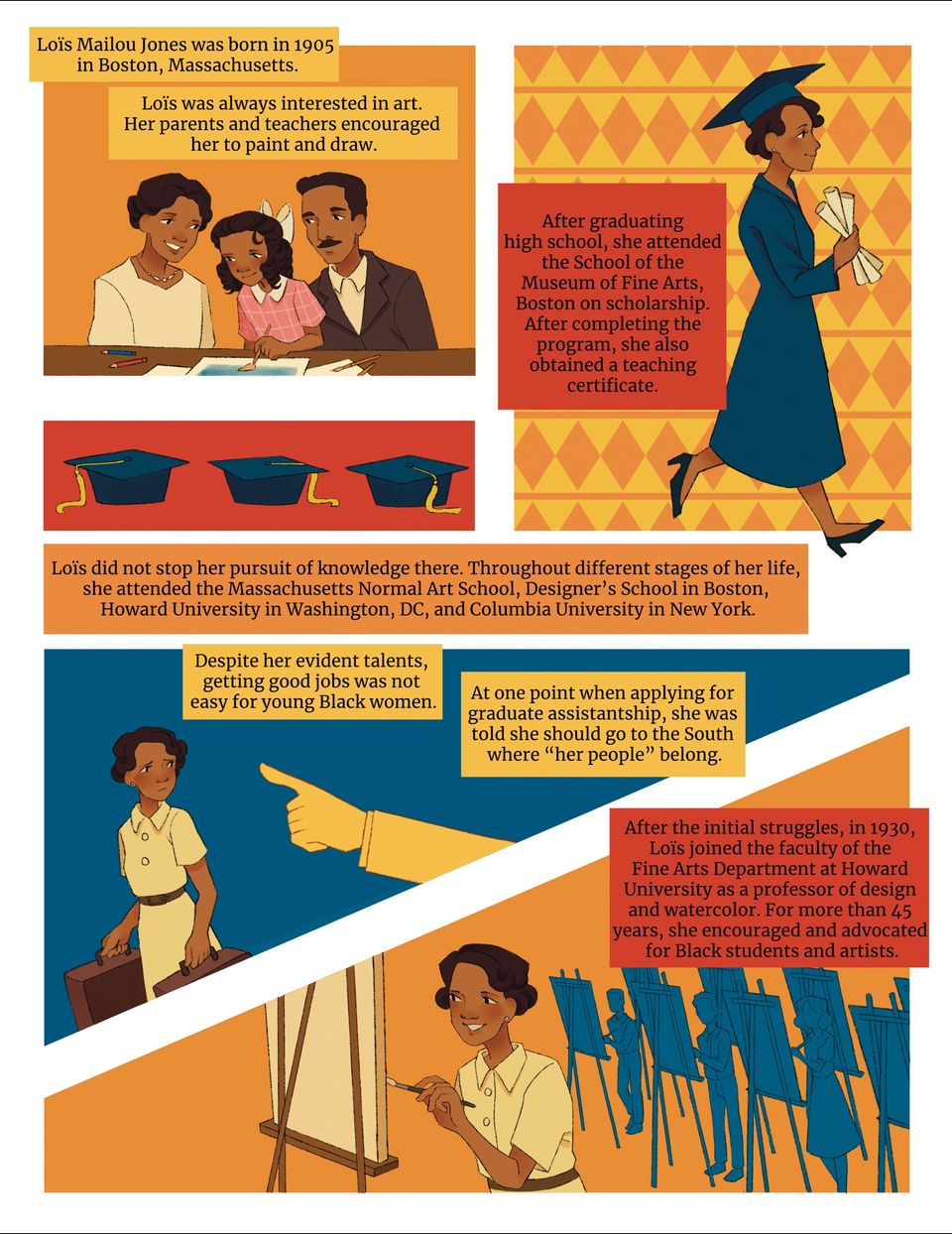
Panel 1: A young Loïs sits at a table painting a picture while her parents watch proudly over her shoulders. The table is strewn with art supplies like colored pencils, paper, and brushes. Behind them, the background is orange. Loïs is wearing a pink and white plaid top with short sleeves and a white collar, and a coordinating white bow ties half her hair away from her face. Her mother has medium brown skin, dark brown hair, and deep brown eyes. Her hair is pulled back from her face is soft waves, and she smiles with pride at her daughter. She is wearing a white blouse and a delicate gold necklace. Her father wears a brown suit with a white shirt. He has deep brown eyes, medium brown skin, dark brown hair, and a moustache. He smiles softly with pride at his daughter. Text above them reads: “Loïs Mailou Jones was born in 1905 in Boston, Massachusetts. Loïs was always interested in art. Her parents and teachers encouraged her to paint and draw.”
Panel 2: Loïs, wearing a navy-blue graduation cap and gown and coordinating high heels, strides confidently to the right while holding three certificates in her right hand. Her hair falls in soft waves around her face, and she smiles softly yet proudly. Behind her, a geometric diamond pattern in orange and yellow fills the background. To her left, text reads: “After graduating high school, she attended the School of the Museum of Fine Arts, Boston on scholarship. After completing the program, she also obtained a teaching certificate.”
Panel 3: Three navy- blue graduation caps with gold tassels sit in front of a red-orange background. Below, text reads: “Loïs did not stop her pursuit of knowledge there. Throughout different stages of her life, she attended Massachusetts Normal Art School, Designer’s School in Boston, Howard University in Washington, DC, and Columbia University in New York.”
Panel 4: Against a blue background, an arm, silhouetted in pale yellow, points Loïs away as she looks towards them in sadness. She is wearing small pearl earrings, a cream-colored dress with short sleeves and a collar, cinched with a brown belt. Her hair waves softly around her face, and she clutches a brown leather suitcase in each hand. Text above her reads: “Despite her evident talents, getting good jobs was not easy for young Black women. At one point when applying for graduate assistantship, she was told she should go to the South where “her people” belong”.
Panel 5: Loïs, wearing the same cream-colored dress paints on an easel while students behind paint on their own easels. Her face beams with joy, and she is focused on her canvas. The rows of students behind her are silhouettes in navy blue against a warm orange background.
Text above them reads: “After the initial struggles, in 1930, Loïs joined the faculty of the Fine Arts Department at Howard University as a professor of design and watercolor. For more than 45 years, she encouraged and advocated for Black students and artists.”

Panel 1: Loïs, dressed for winter in a red beret, navy blue overcoat, red scarf, dress, thick grey socks and black shoes, paints on an easel. The background is framed like an oversized postcard with a white border and a painting of a canal depicted in a soft focus. She smiles softly with concentration as she works on her painting. Around her, text reads: “In 1937, she sailed to Paris for a year of study. She soon felt a strong spiritual affinity for the French people and their nation, which inspired her numerous French landscapes and cityscapes. She blossomed in France: “Paris really gave me my freedom.” Loïs went back to Paris whenever she could. She gained recognition in France and became the only African American female painter to achieve fame abroad at the time.”
Panel 2: Loïs paints on an easel in front of an oversized postcard with a soft-focus painting of a market scene. Her hair is pulled back and soft curls frame her face. She wears gold hoop earrings, a red coat over a navy dress, grey stockings and black shoes. She smiles slightly and looks intently at the canvas in front of her. To her left, text reads: “In 1954, she was invited to be a guest professor in Port-au-Prince, Haiti. Loïs fell in love with Haiti’s warm weather, its beautiful scenery, and its religious people. She created more than 40 deeply felt paintings in Haiti.”
Panel 3: Loïs and her husband’s hands are clasped against a yellow background. A simple gold wedding ring sits on her ring finger. Her hand is medium brown and his hand is medium dark brown. His arm is in a navy suit and the edge of a white shirt cuff peeks out. To the right, text reads: “Her connection with Haiti was deepened when she married her husband Louis Vergniaud Pierre-Noel, a prominent Haitian artist.”

Panel 1: Against a yellow background, figures of five women are silhouetted in navy. The woman to the left is wearing a head scarf tied tight around her head and a short-sleeved blouse and long skirt. The women next to her has short, cropped curly hair and wears a stack of necklaces and a long shift dress. The woman at the center has curly hair that brushes her shoulders and frames her face. She is wearing a flowy short sleeved dress cinched at the waist. The next woman has long hair that falls below her shoulders and is twisted into locks. Her blouse falls softly off her shoulders. The final woman wears a scarf wrapped around her face that falls to her shoulders. Text above them reads: “She became interested in the rites of passage of African women...
Panel 2: The continent of Africa, with country borders outlined in red floats against a blue background. Red pins mark many locations across several countries. To the right, text reads: “...and was invited by the State Department to visit Africa to continue her studies, publishing a report on Contemporary African Art in 1970.”
Panel 3: Two African masks and two animal figurines decorated with bright geometric lines float in front of a colorful patterned background in blue, yellow, red, and orange. Text reads: “She integrated elements of African masks, sculptures, and textiles, and her paintings became more abstract.”
Panel 4: From behind, Loïs looks at a red wall and five of her paintings framed in gold. Her hands are clasped behind her back. She is wearing a red blouse, rolled up to her elbows, grey pants, and black shoes. Her hair is short, and she is wearing gold hoop earrings. Around her, a crowd of museumgoers are silhouetted in yellow. To her left, a woman with long straight hair, wearing a t shirt and pants and a purse, walks to the left. A man with short curly hair, wearing a jacket and pants, strides behind her. On the right a woman with curly hair brushing her shoulders is facing the wall, sitting in a wheelchair. On the far right a woman wearing a dress with a short straight haircut holds the hand of a child with short hair. Above them, text reads: “Loïs became a leading figure of the Washington, DC, Black arts scene. Her 1989 retrospective traveled across the country and brought her the praise she so richly deserved.”
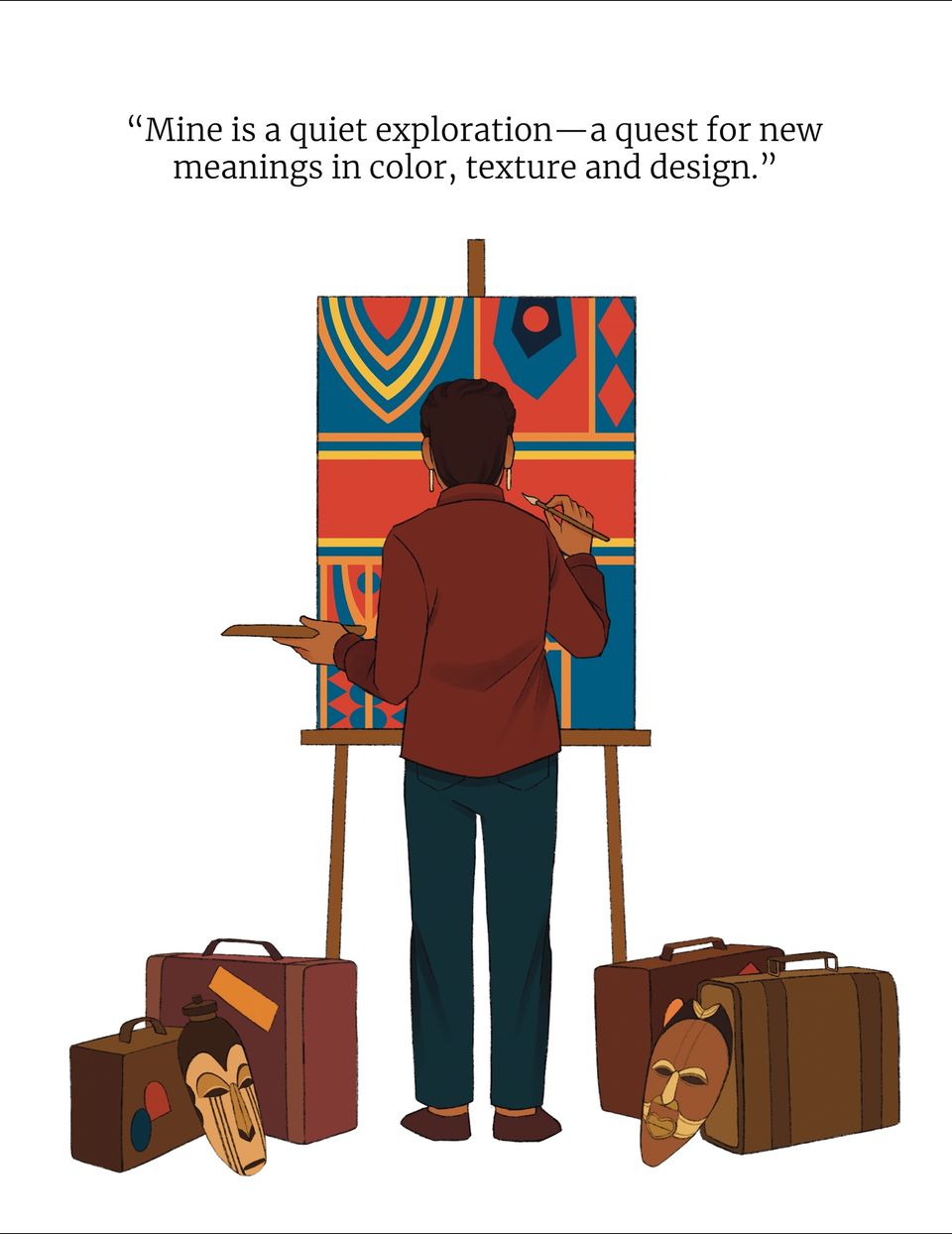
The illustration takes up the entire page.
Loïs stands facing away, painting a colorful geometric pattern in blue, orange, red, and yellow at an easel. She is wearing a red long-sleeved blouse, blue-grey plants, gold hoop earrings and holds a palette in her left hand and a paintbrush in her right. She is surrounded with four leather suitcases dotted with colorful travel stickers and two African masks propped against them.
Above her, text reads: "Mine is a quiet exploration—a quest for new meanings in color, texture and design.”
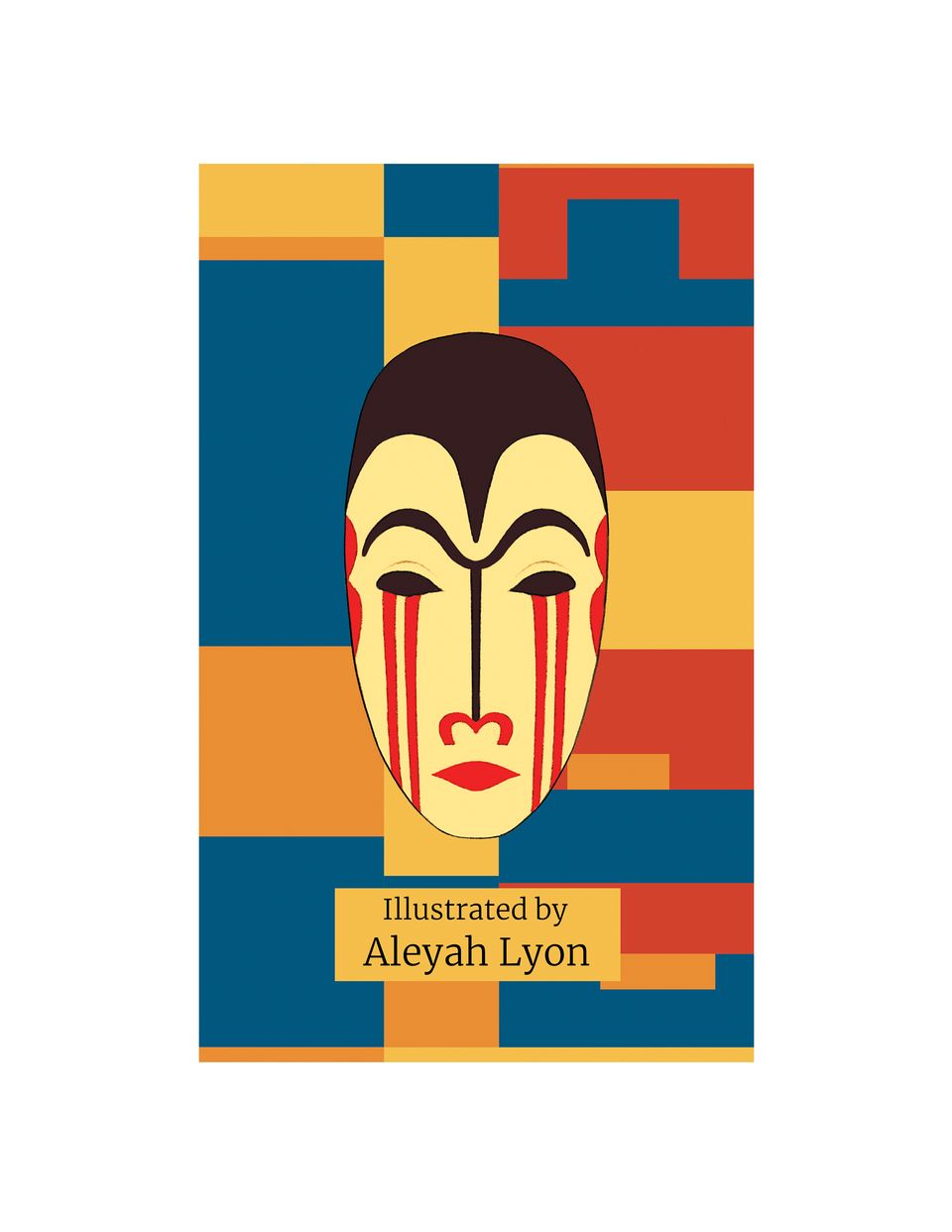
An African mask with brown, cream, and red design is centered against a geometric background of blue, orange, yellow, and red.
Text: “Illustrated by Aleyah Lyon”














